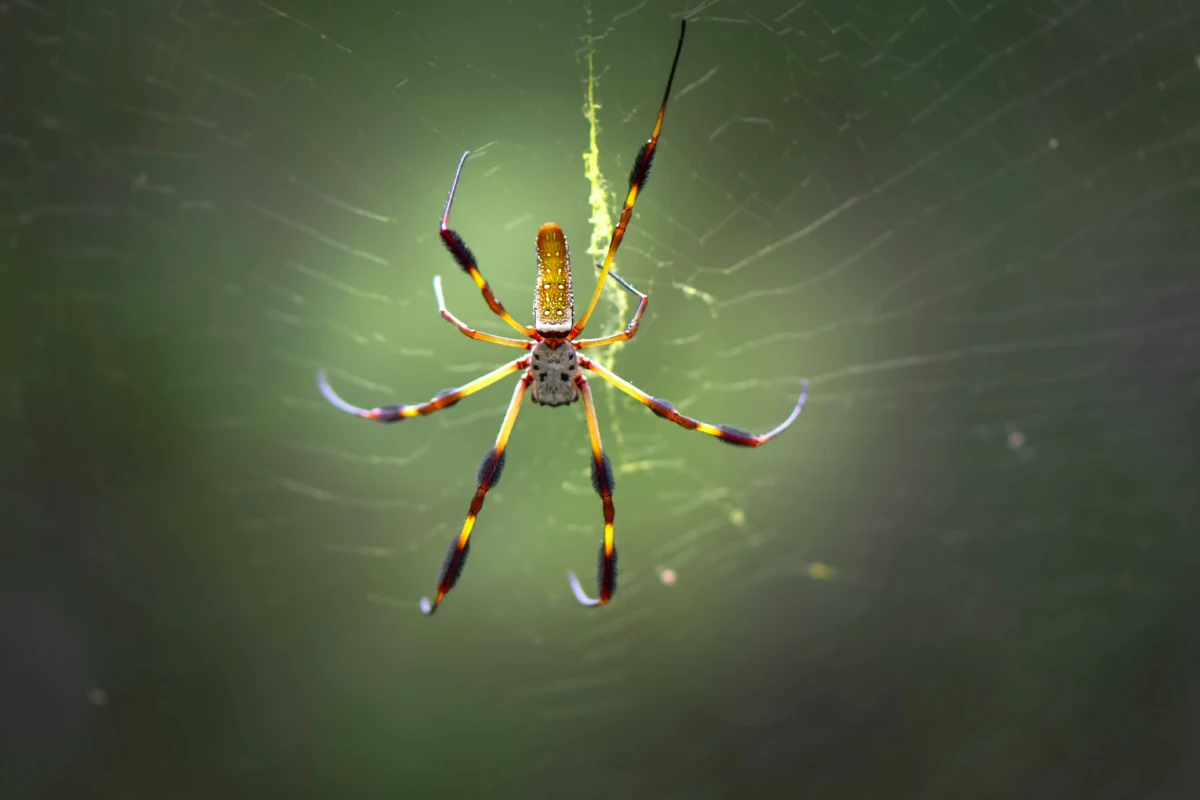Marvel with us at The Glistening Yellow Banana Spiders of Florida!
The Banana spider in Florida is an intriguing phenomenon! If you live or are visiting the Sunshine State, it’s sure to bring out your inner entomologist with its abundance of beautiful golden-yellow arachnids.
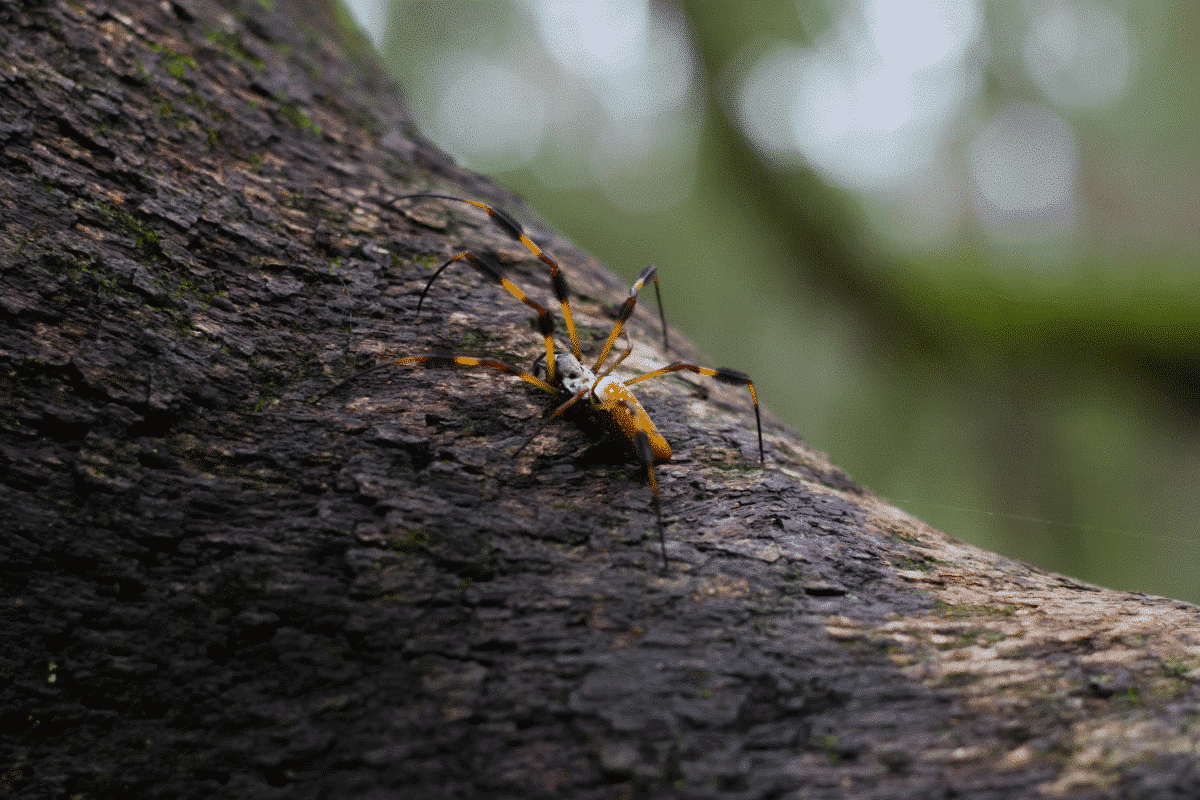
As one of Florida’s most eye-catching nature scenes, these spiders add a dramatic flair to scenic landscapes and provide an invaluable source of biological control in agricultural settings. If you are eager for more check out our article on Florida’s spiders species with their identifications and benefits with our dedicated articles.
Join us as we explore the fascinating world of banana spiders in Florida – from their physical characteristics and habitats to their unique behaviors and roles in our ecosystem.
Want to jump ahead? Click below
Key Points
| Key Points | Description |
|---|---|
| Appearance | – Golden or yellow hue with contrasting black stripes on their abdomens. – Large size, reaching up to 6 cm in body length and 25 cm across their extended legs. – Long cylindrical abdomens and relatively short legs compared to other spider species. |
| Web-building | – Construct intricate orb-shaped webs with three concentric circles and radiating spokes, ideal for rapid prey capture – Typically found in foliage, tropical plants, and other environments. – Use silk threads to detect vibrations from trapped prey. |
| Harm to Humans | – Generally not considered harmful to humans. – Venom primarily designed for subduing small insects, not potent enough to cause harm to humans unless there’s an allergy or unusual sensitivity. |
| Habitat | – Found in various habitats across Florida, including tropical forests, mangroves, agricultural fields, and urban gardens. – Commonly seen in southern and central regions of Florida. |
| Diet | – Opportunistic predators feeding on insects such as flies, crickets, grasshoppers, and caterpillars. – Also scavenge for food, including dead insects and other arthropods. – Primarily capture flying insects in their webs. |
| Conservation Efforts | – Conservation initiatives aim to protect their habitats, educate communities, and promote research on their populations. |
Introducing The Banana Spider Of Florida
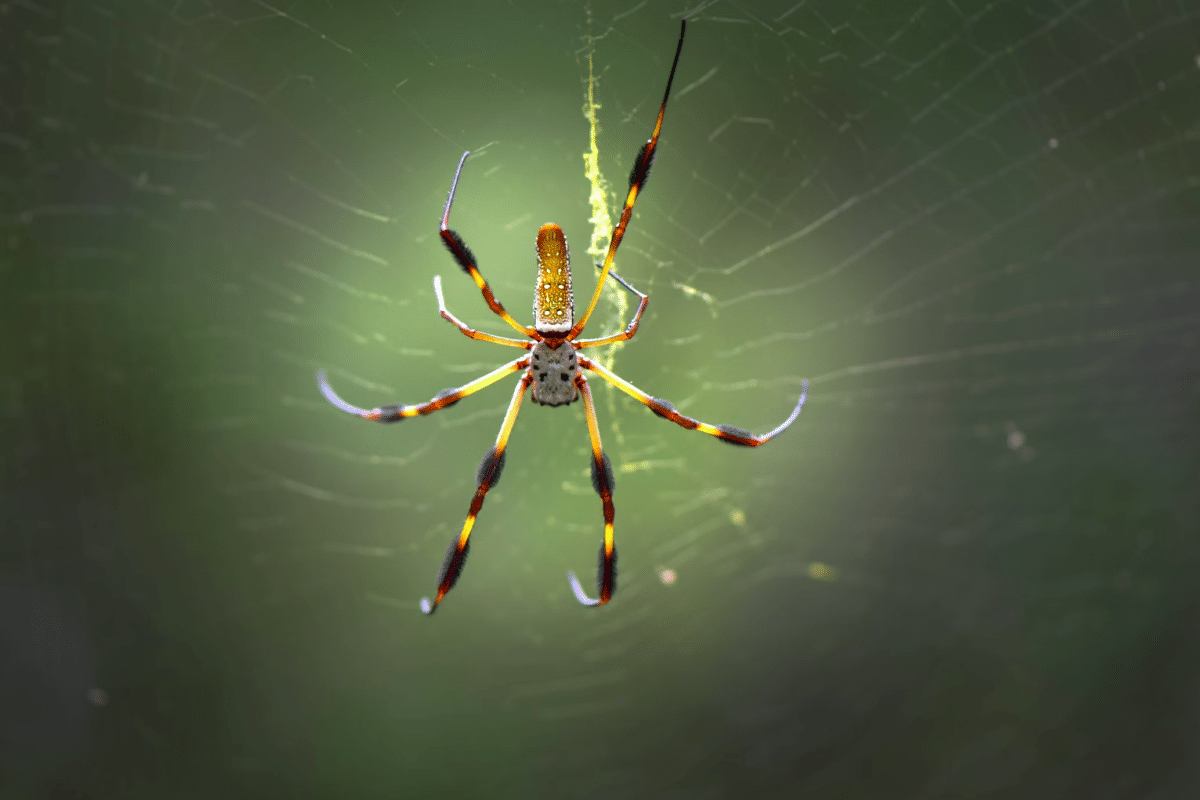
| Characteristic | Description |
|---|---|
| Scientific Name | Nephila clavipes |
| Common Name | Golden Silk Orb-Weaver Spider or Banana Spider |
| Size | – Females: Approximately 1-2 inches (25-50 mm) in body length, with leg spans reaching up to 4-5 inches (100-125 mm). – Males: Much smaller, typically less than half the size of females. |
| Coloration | – Females: Bright yellow or golden abdomen with silver or white markings, dark brown to black legs. – Males: Smaller and less colorful, with brownish or yellowish markings. |
| Web | – Builds large, intricate orb-shaped webs that can measure several feet in diameter. – These webs are known for their strength and durability. – Often located in vegetation, near water bodies, or in gardens. |
| Habitat | – Found in warm, tropical, and subtropical regions, including Florida. – Typically seen in wooded areas, gardens, and areas with lush vegetation. |
| Diet | – Carnivorous, primarily preying on flying insects such as moths, flies, and beetles. – Captures prey in their orb-shaped webs. |
| Venom | – Their venom is primarily designed to immobilize small insects and is not harmful to humans unless there is an allergy or unusual sensitivity. |
| Behavior | – Known for their patience and ability to remain still while waiting for prey to become ensnared in their webs. |
| Life Span | – Females may live for several months to a few years, while males have a shorter lifespan, typically a few months or less. |
| Reproduction | – Sexual reproduction – Females lay egg sacs containing hundreds of eggs, which are suspended in their webs and guarded by the female. |
| Conservation Status | – Not typically considered endangered or threatened, but local populations can be affected by habitat destruction and environmental changes. |
| Notable Features | – The silk they produce is exceptionally strong and golden in color, contributing to their distinctive appearance. |
What Makes Banana Spiders in Florida Special:
The yellow banana spider, Nephila clavipes, is an incredibly unique arachnid species. They are beautiful, with their vibrant golden hue contrasting sharply against the green foliage of Florida’s forests and fields. They also play a vital role in our ecosystem as one of nature’s primary sources of biological control. Because of their large size and bright coloration, these spiders often catch the eye of curious onlookers and make for a spectacular sight when spotted.
While this spider species is not on our list of the 23 most endangered spider species, it is worth noting that many local populations can be threatened.
What Makes Them So Unique?
The yellow banana spider is quite distinct from other spiders due to its size and coloration. They tend to be larger than other spiders in the area, reaching heights of up to 6 cm in body length and 25 cm across their extended legs.
Their abdomens are long and cylindrical, while their legs and pedipalps are relatively short compared to other spider species. In terms of coloration, they generally have yellow or orange bodies with fine black stripes outlining their bodies. As such, they stand out quite quickly when placed among foliage or any other environment, providing a contrasting background for them to shine upon.
Furthermore, these spiders have adapted impressive hunting strategies that allow them to capture prey much faster than their counterparts; they build net webs of three concentric circles with radiating spokes emanating outwards from each circle’s center. This webbing allows them to rapidly ensnare unsuspecting insects and small birds or reptiles who may find themselves stuck within its grasp. This truly remarkable trait sets these spiders apart from others in the region!
They are definitely not on our list of the Top 10 deadliest spiders and are generally not considered harmful to humans,
Where You Can Find Banane Spiders in Florida

- Banana spiders in Florida can be found in various habitats around the state, from tropical forests and mangroves to agricultural fields and urban gardens.
- These spiders are most commonly spotted in southern and central regions, including Miami-Dade County, Sarasota County, Hillsborough County, Polk County, Lee County, Charlotte County, and Collier County.
- Frequently, the spiders can be seen perched atop the leaves of banana trees or other tropical plants.
Behind The Scenes
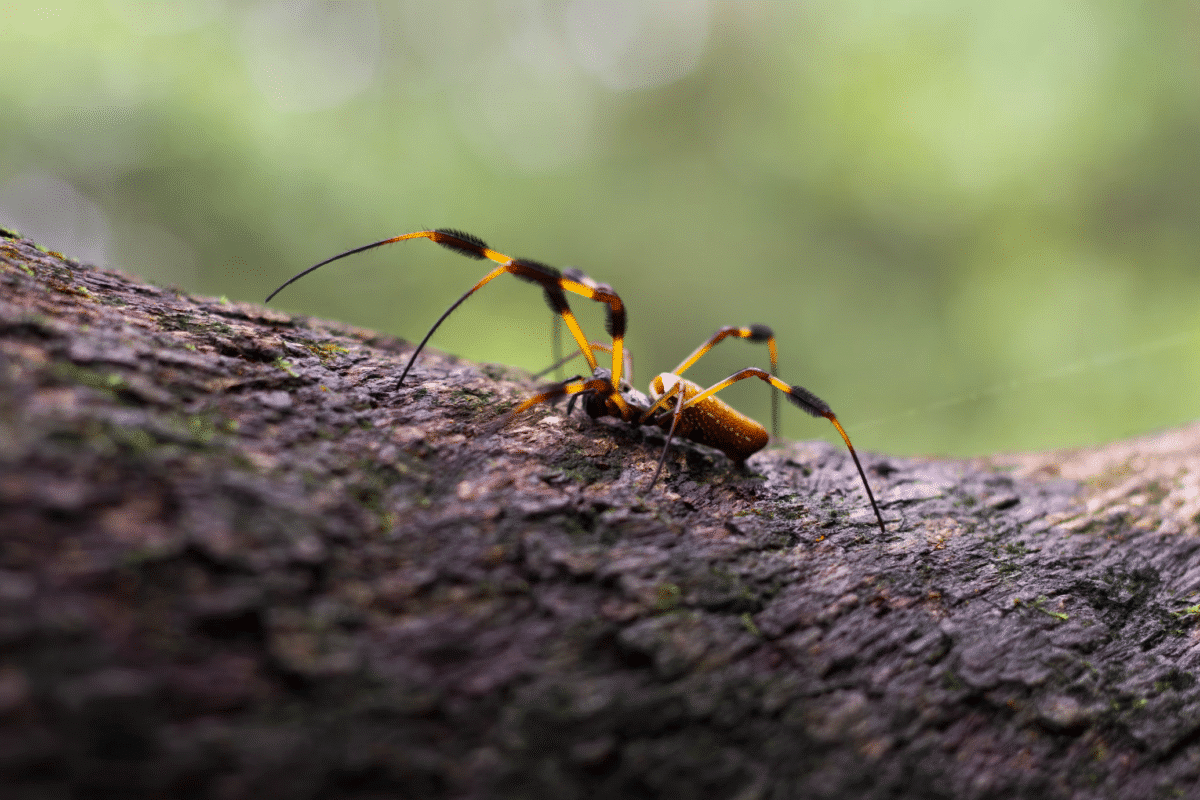
- Banana spiders form orb webs by spinning silk threads radiating outward from the center. They use their legs to feel for vibrations which let them know when the prey has landed on their web, and they will also use their feet to help attach the web’s spokes.
- The spiders hunt by waiting patiently until an insect or other arthropod blunders onto their web, and then they move quickly to capture it with their front legs while using their back legs to hold onto the web strands.
- To survive in Florida’s often harsh climate, banana spiders in Florida use a combination of shelter-seeking behaviors, such as staying close to objects for camouflage and taking refuge under leaf litter or inside crevices when temperatures become too hot or dry for them.
Check out Identifying Banana Spiders.
The Lifestyle Of A Banana Spider
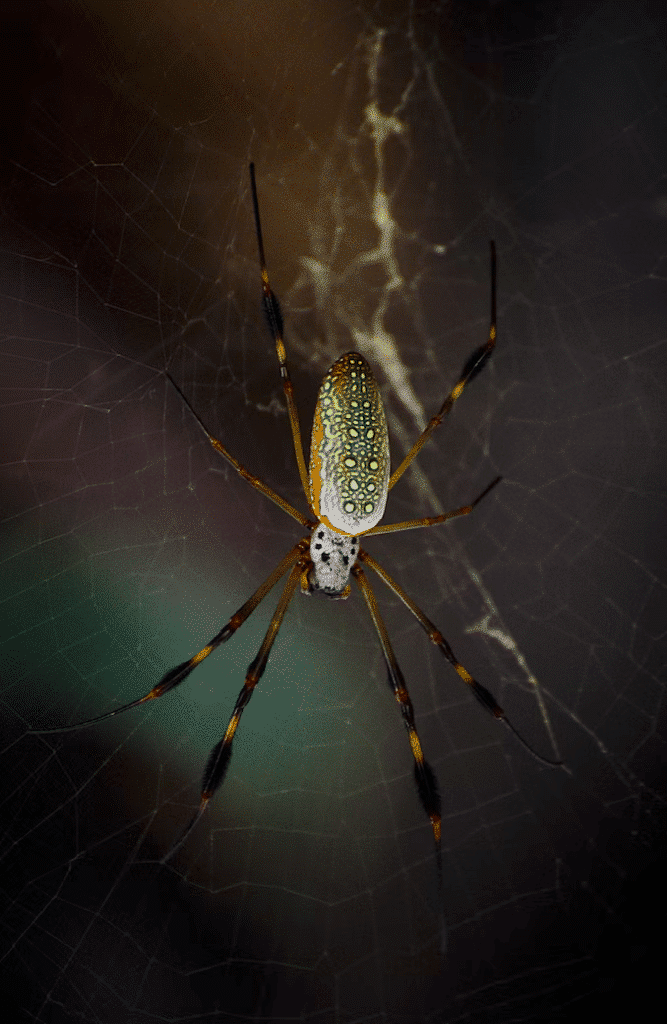
Diet:
- Banana spiders are opportunistic predators that feed on insects, including flies, crickets, grasshoppers, and caterpillars.
- They also scavenge for food, such as dead insects and other arthropods.
- Their primary preference is flying insects they capture in their webs.
Behavior:
- Banana spiders, such as moths and beetles, often build webs near light sources to attract more prey, such as moths and beetles.
- To maintain the strength of their webs, they will regularly repair them by replacing worn-out silk strands with fresh ones.
- They also can rapidly regenerate damaged parts of their webs.
Mating Habits:
- Male banana spiders release pheromones onto web strands during mating season to attract potential mates.
- Females lay eggs in clusters wrapped securely in silk for protection until hatching.
- Want to check out a spider bite? After hatching, young banana spiders form large groups that share the same web until they reach adulthood and wander off independently.
An Up Close Look

- The yellow banana spider is scientifically known as Nephilengys cruentata and belongs to the family of Nephilidae.
- It has a unique, golden yellow color, so they are called “banana spiders.”
- Its body length ranges from 0.7-2 inches, while its leg span can reach up to 5 inches!
- They have eight legs, a cephalothorax, and an abdomen that separates them into two distinct sections.
- A female banana spider typically produces one egg sac daily and can lay up to 1,000 eggs during its lifetime.
- Their web is organized in a spiral fashion, with webbing radiating outwards from the center of the web, resembling a wheel.
Here’s why so many banana spiders are crawling around Florida right now.
Conservation Efforts For These Critters
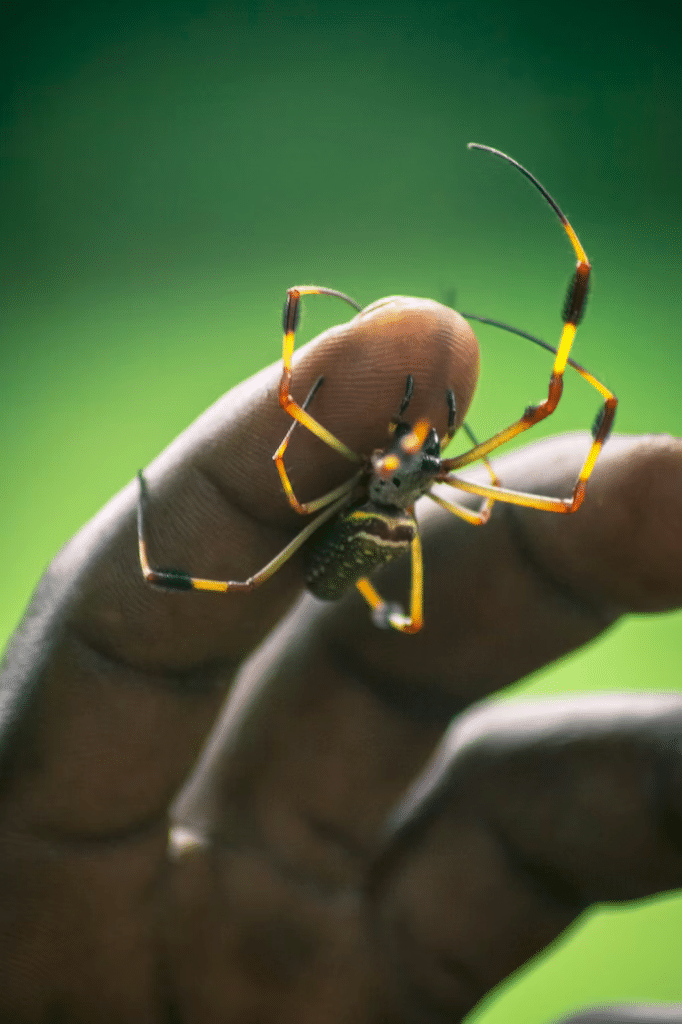
- Banana spiders are essential in natural pest control and should be protected from threats such as urbanization or habitat destruction.
- Environmental organizations have set up conservation initiatives to protect their habitats. They do this by working with local communities and providing education on their importance as part of the ecosystem.
- As well as conservation efforts, scientists are researching different methods to help increase their populations. Possibly by improving breeding conditions or providing food sources for them in agricultural environments.
- Other ways we can help include limiting our use of pesticides and chemicals to reduce the risk of contamination in their environment. As well as avoiding handling them directly, and being mindful not to disturb or damage their webs when outdoors.
Wrapping Up with Banana Spiders of Florida
With all the facts and figures out, let’s look at the more emotional side of banana spiders! These vibrant yellow creatures add an air of awe and mystery to Florida’s ever-evolving landscape. On a deeper level, though, they remind us of our integral relationship with nature. Thus making us pause and appreciate even the smallest creatures. Observing and enjoying these arachnids is a valuable exercise. It will open your eyes to a fantastic array of biodiversity in your backyard.
So, if you pass by one of Florida’s many spider hotspots, stop for a moment! Marvel at their glimmering golden hue, marvel at their cryptic shapes . But most importantly, appreciate them as powerful components of our world’s fragile ecosystem.
Thanks for following along with us! Next up, Cane Spider.
Frequently Asked Questions (FAQs)
Banana spiders, specifically the Golden Silk Orb-Weaver Spider (Nephila clavipes) and Yellow Garden Spider (Argiope aurantia), are not considered harmful to humans. They are not aggressive and rarely bite unless provoked. Their venom is primarily designed to immobilize small insects. It is not harmful to humans unless there is an allergy or unusual sensitivity.
Yes, banana spiders in Florida are capable of biting if they feel threatened or cornered. However, they generally do not pose a significant threat to humans. Their bites are not known to be aggressive or harmful, and they would much rather flee than bite.
Banana spiders, such as the Golden Silk Orb-Weaver and Yellow Garden Spider, continue to be a part of Florida’s ecosystem. Their populations can fluctuate due to factors like habitat changes and environmental conditions. They are still present in suitable habitats across the state.
It is not recommended to handle banana spiders or any wild spider in general. It can stress the spider and may result in a defensive bite. Additionally, while their venom is not usually harmful to humans, individual reactions can vary. Some people may be more sensitive or allergic. It’s best to observe and appreciate these spiders from a safe distance in their natural habitat.
- Bald Eagle Family Expand Their Nest In California - April 24, 2024
- Firefighter Saves Abandoned Kittens Found Cuddling In Hoses - April 24, 2024
- Dolphins Get High Playing Catch With A Pufferfish - April 24, 2024

